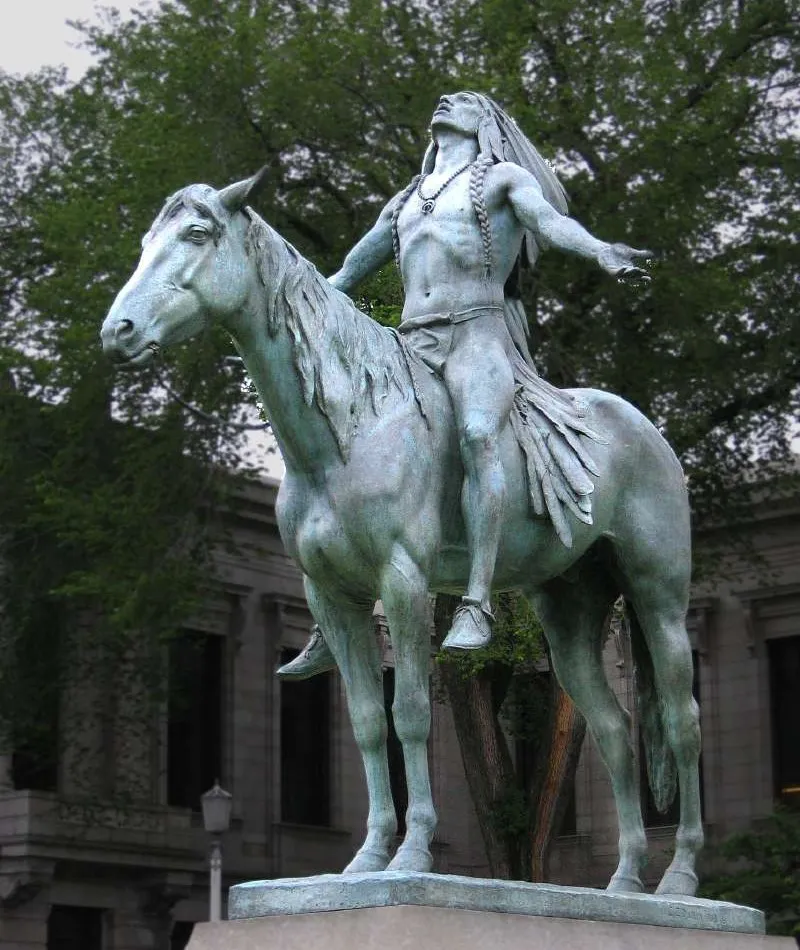Appeal to the Great Spirit, sculpture, MFA Boston
.webp)
(Author Photo)
Appeal to the Great Spirit, outside of the Museum of Fine Arts, Boston, Massachusetts, USA. Sculptor Cyrus E. Dallin, 1909.
Appeal to the Great Spirit is a 1908 equestrian statue by Cyrus Dallin, located in front of the Museum of Fine Arts, Boston. It portrays a Native American on horseback facing skyward, his arms spread wide in a spiritual request to the Great Spirit. It was the last of Dallin's four prominent sculptures of Indigenous people known as The Epic of the Indian, which also include A Signal of Peace (1890), The Medicine Man (1899), and Protest of the Sioux (1904).
The Great Spirit is an omnipresent supreme life force, generally conceptualized as a supreme being or god, in the traditional religious beliefs of many, but not all, indigenous cultures in Canada and the United States. Interpretations of it vary between cultures. In the Lakota tradition, the Great Spirit is known as Wakan Tanka. According to Lakota activist Russell Means, a more semantically accurate translation of Wakan Tanka is the Great Mystery. Often, Lakota language prayers begin with the phrase “Tunkasila”, which translates to “grandfather, Great Spirit.” In the Haudenosaunee tradition, the Great Spirit is known as "the Creator". Haudenosaunee men's lacrosse team captain Lyle Thompson, characterized it as "the Creator that lives in all of us. It’s in the sun. It’s in the moon. It’s in the stars and the water. It’s in the earth." In the Algonquian tradition, the Great Spirit is known as Gitche Manitou. Due to perceived similarities between the Great Spirit and the Christian deity, European colonial missionaries drew comparison between the two deities as a Christianization conversion technique. (Wikipedia)
.webp)
(Author Photo)

(Daniel P. B. Smith Photo)

